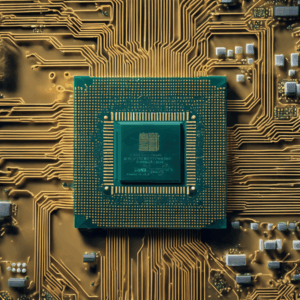
Future Tensions: The Looming Plateau in AI Reasoning Models 🚀
As artificial intelligence continues to redefine our world with astonishing advancements, a new analysis suggests a potential shift — a deceleration in the progress of AI reasoning models. This revelation raises important questions about the future trajectory of AI development and its implications for sectors heavily reliant on machine learning innovation. So, what does this mean for future AI capabilities?
Understanding AI Reasoning Models
AI reasoning models, or systems capable of replicating human-like reasoning, have historically been the linchpin of artificial intelligence breakthroughs. These models are what allow AI to not just perform rote calculations but to infer, deduce, and make decisions, mimicking aspects of human cognition. This ability spans a variety of applications, from strategic games like chess to understanding complex natural languages.
Recent Triumphs and Their Underlying Challenges
In recent years, AI reasoning models have achieved impressive feats, notably highlighted in headline-grabbing victories over human champions in strategic games such as Go and poker. However, these accomplishments often mask the underlying challenges AI researchers face: massive data requirements, computational power demands, and the intricate task of bridging the gap between human intuition and machine logic.
“Despite monumental strides, advancing the core aspects of AI reasoning demands exponentially growing resources, which is unsustainable long-term,” says Dr. Elisa Torres, a leading AI researcher. 🤖
The Analysis: Slowing Momentum Ahead?
Recent analyses indicate a looming plateau in the advancement rate of AI reasoning capabilities. Current trends depict a trajectory where incremental improvements necessitate significantly greater investments than before. This is partially due to inherent complexity in achieving nuanced understanding and contextual reasoning compared to pattern recognition tasks. As these models approach theoretical limits of what current architectures can achieve, the cost-to-benefit ratio of improvements becomes steeper.
Implications for Industries and Innovation
Economic and Technological Repercussions:
- Enterprise Dependence: Industries such as finance, healthcare, and logistics rely heavily on AI’s reasoning abilities for predictive analytics and decision-making tools. A slowdown could prompt reconsideration of AI strategies or increased investments to maintain competitive edges.
- Innovation Bottlenecks: Startups and tech companies, often at the frontier of novel AI applications, may face tighter constraints in developing groundbreaking solutions in reasoning-heavy domains.
Navigating the Future Landscape ⏩
While the movement might decelerate, it does not halt the innovation train. Researchers are exploring alternative approaches including neurosymbolic AI that combines neural networks with symbolic reasoning, aiming to enhance reasoning abilities without solely depending on traditional machine learning paths.
Moreover, interdisciplinary collaboration could catalyze breakthroughs in AI reasoning models, leveraging insights from cognitive science, neuroscience, and even philosophy to unlock new perspectives and solutions.
The potential slowdown in AI reasoning model improvements offers a reflective pause — an opportunity to reassess how we allocate resources for sustainable AI growth while exploring more imaginative routes. As history has shown, limitations often serve as springboards for innovation, pushing the boundaries of what’s conceivable. 🚀








